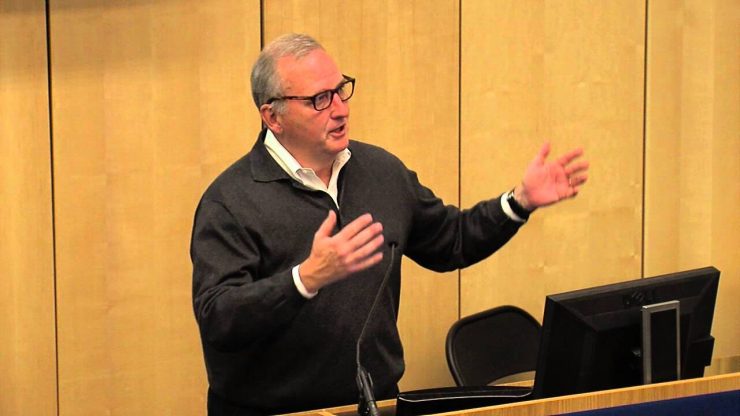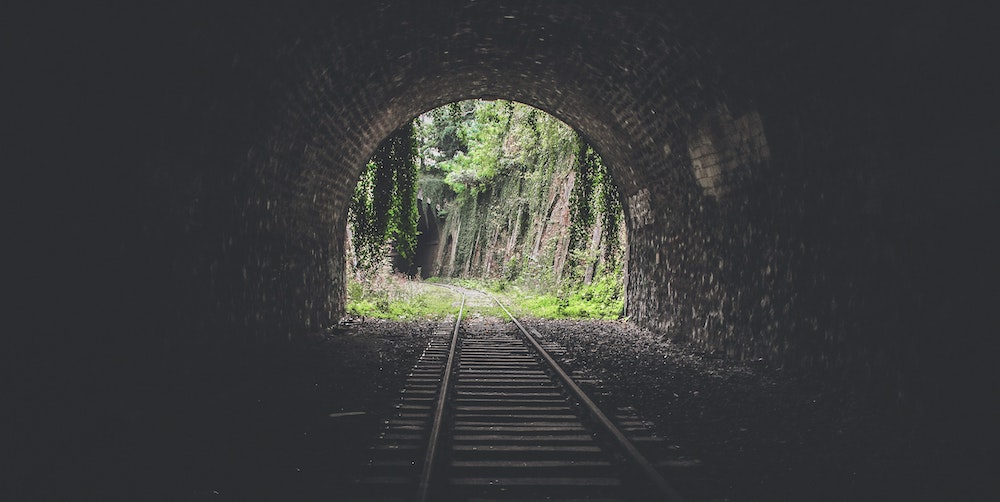
With the introduction of effective vaccines, the end of the novel coronavirus pandemic is finally on the horizon and the public needs to stay the course by adhering to safety protocols for the near future, Dr. George Rutherford said in an interview with the Exedra last week.
“We’re 80 percent of the way through, I’d say,” said Rutherford, a Piedmont resident who heads the Division of Infectious Disease and Global Epidemiology at UC San Francisco and is a professor of Epidemiology and Health Administration at UC Berkeley. “We just have to get everybody vaccinated and that should be that.”
He said the vaccines are nothing short of a modern medical miracle. “Huge, huge, huge,” was how he described it. “This is the most important thing in microbiology since the discovery of the double helix in 1948, OK? It’s a miracle. Period.”
J&J vaccine is welcome; variant threat is overblown
That includes the third vaccine by Johnson & Johnson that was just approved for use.“It’s a great vaccine, and I would get it if I had the chance,” Rutherford said. “The very minor reported difference in vaccine efficacy (and remember the vaccines weren’t compared head to head) is more than offset by its ease of administration and storage.”
While variants of the virus have raised concerns, “I think this end of the world stuff is overblown,” he said. “I see it as little, small level challenges to deal with. And the real question comes down to how many people can we get vaccinated. Once I know what that case is, then I can give you an answer to when this is all going to be over.”
Infection rates are dropping sharply around the state and restrictions in some counties are again easing as a result, good indicators of a gradual return to a more normal daily life. “I think you’re starting to see it now,” Rutherford said. “I don’t know about Alameda (County), but San Mateo and Marin went from the purple to the red tier this past Tuesday and I can’t imagine that San Francisco won’t go next week,” Rutherford said.
Full vaccination not necessary to reopen schools
That, in turn, will lead to one of the biggest steps away from the shutdown, one families have been anxiously wondering about for months.
“We’re going to be in a situation where the big emphasis will be on getting schools reopened and getting larger sorts of events opened,” Rutherford said. He believes schools are safe to open now, with the proper precautions, and doesn’t think the process should wait for teachers to be fully vaccinated. “No, I don’t. I think that’s something we can do as we go,” he said. “There’s a tremendous amount of protection on the first dose. We now have a huge series, I mean tens of thousands of student days, with no teachers who’ve gotten infected.”
As always, however, common sense needs to be involved. “You obviously should take precautions, and the vaccine is a final level of precaution, but I don’t think that should hold things up,” Rutherford said. “I do think they should get vaccinated as quickly as possible, but, if I vaccinated you today then we would be talking about six weeks from now. The second dose would be four weeks and then there’s another two weeks for it to kick in. So it’s not sort of a snap thing.”
He said schools appear to be taking the correct steps for classrooms and have options available.“You can put air-handling units in classrooms, you can open windows — if you can open them,” he said.
“There are lots of things you can do. But most (everybody is) wearing masks. Wearing masks and having the desks far enough apart.”
Vaccinations = more opportunities to socialize
Rutherford also offered some thoughts on socializing as the vaccine rollout continues.
“If we’re talking about having a couple over for dinner who have been vaccinated, you don’t need to wear a mask, you don’t need to take any particular precautions. Now, if we’re talking about going to a Metallica concert — that’s another thing,” he said.
“Basically, what I tell people is, if you’ve been vaccinated and you’re going to wade out into a crowd, well, you don’t know who they are. Think grocery stores, think Costco, think flying across the country on an airplane, where you’re not controlling who’s around you,” Rutherford said.
“Assume you’re a vaccine failure and assume that they’re infectious. That’s for now. I think that when we get deeper into this [vaccine rollout] and we start really seeing herd immunity — we’re seeing some of it now — but when we really start seeing herd immunity, then that will be when I back down from that advice. But I think right now you still need to be conscious of risks.”
Mask-wearing remains a must
“They’re actually required. And I can tell you as we go back down from the purple to red [tier] there’s going to be a lot more enforcement going on,” Rutherford said.
As for double-masking, “I prefer that everybody wear one mask than some people wear two and others wear none,” Rutherford said. “But if you’re older, if you have risk factors, and you’re walking into one of these situations where you really can’t control who’s around you, I think double-masking is prudent. I don’t necessarily do it when I’m walking down the street, but if I’m going into some densely packed thing, like going grocery shopping, yeah, I wear two masks.”
Indoor dining at restaurants
“I think you really have to be conscious of distance, you have to be conscious of ventilation.”
“People need to wear masks when they’re not eating.” He continued, “I think as long as there’s 25 percent occupancy and they don’t push it, with six feet between the tables, I think that’s fine.
But again, this is all about levels of risk and if you’re 85 years old with three additional risk factors, I wouldn’t be so anxious to be going out for indoor dining. But if you’re a health care worker and you’re 25 and you’ve been fully vaccinated, I don’t see any big problem with it. “I think you can diminish the risks. But to me, I like eating outdoors anyway, so this all plays into my hand.”
Where will we be six months from now?
“We’ll still be catching up with vaccines for adolescents and for kids,” Rutherford said. “I think [the pandemic will] be waning by then. The risks will be going down as we achieve herd immunity. And as more and more people are vaccinated there will be fewer who are susceptible, and I think you’ll see the risk mitigation strategies back down commensurately.”
Overall, “I think we’re doing a good job, but it’s not a time to let your foot off the brakes,” Rutherford said. “Be cautious and be careful and things will go back to normal much faster if we do that. Vaccinate when your turn comes.”

Thank you Dr. Rutherford for keeping our City calm, focused and informed. Our family, friends and neighbors deeply appreciate you giving your time, energy, and expertise to help through this pandemic.
Dr. Rutherford for U.S. Surgeon General! He has a such a light hand to his effective words. It’s a pleasure and informative to read/view his prescient interviews. He always seems to process the latest data while the general media is still floundering with catchy headlines that have no substance. I’m a fan.